Recent analysis from SEEK showed that ads for entry level jobs rose sharply over the pandemic before falling over the year to September:
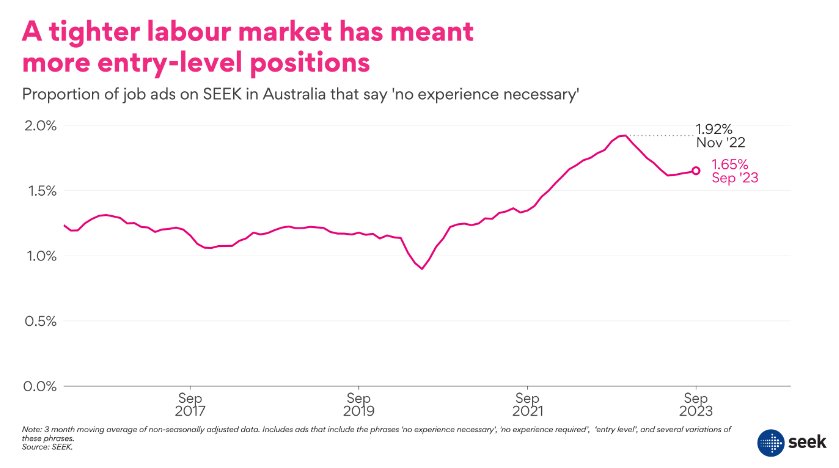
As shown in the next chart, job ads grew fastest for the lowest paid jobs, which were running 50% above the pre-pandemic level:

Unemployment rates also fell the most for lower skilled workers:
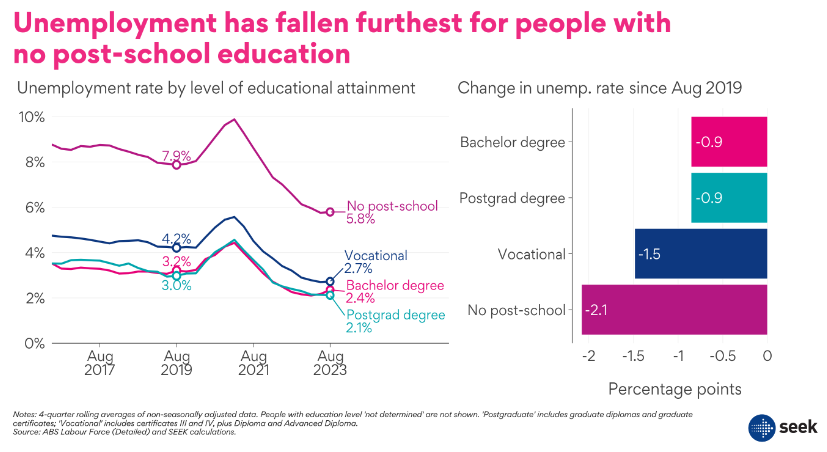
The situation is reversing, however, with data from Jobs & Skills Australia (shown in the below chart from Justin Fabo) showing the biggest decline in recruitment difficulty among low skilled workers:
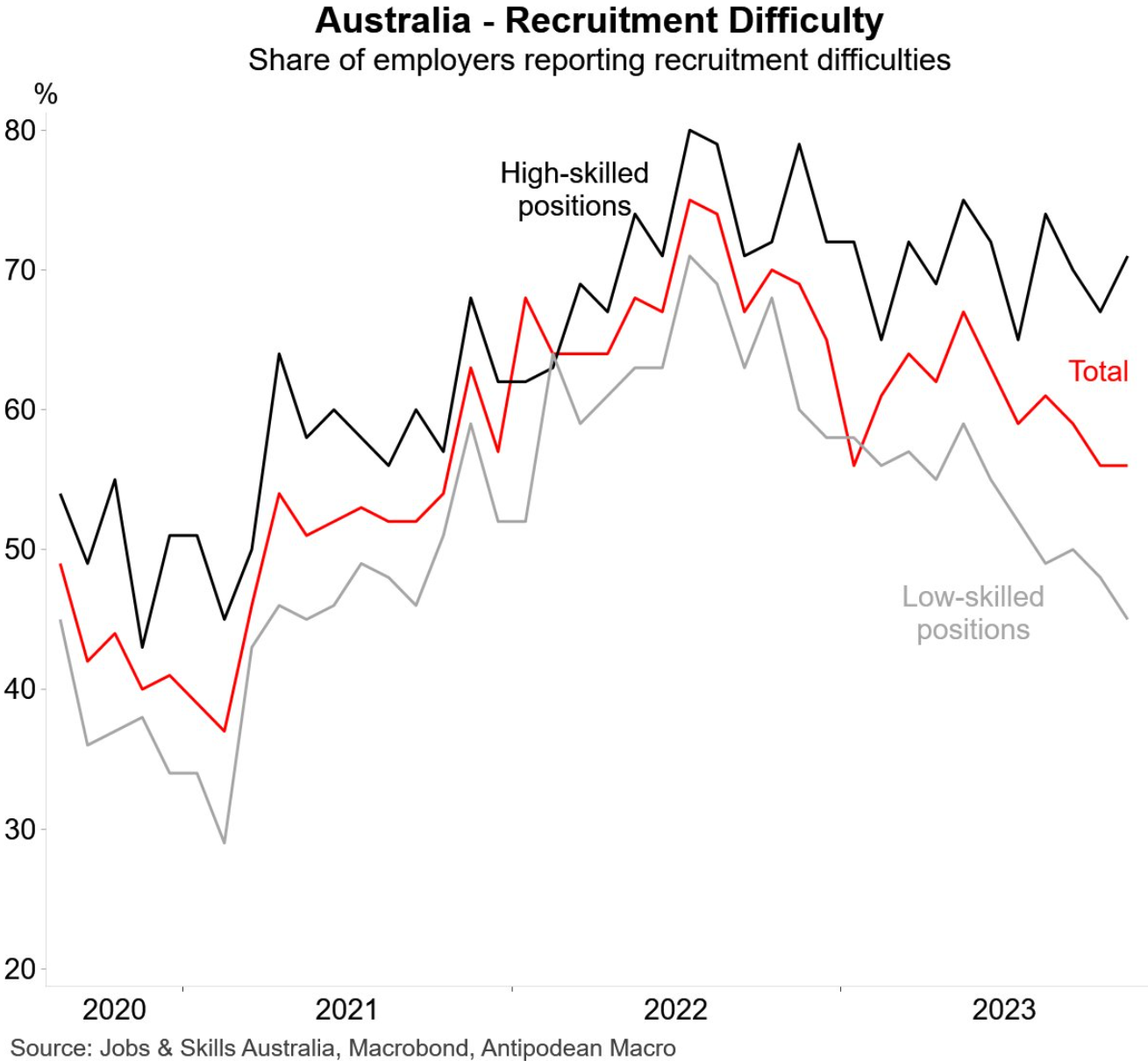
A key driver is likely the record surge in international students in Australia, the majority of whom work in low-skilled positions while studying.
As shown in the next chart, there were a record 673,000 temporary student visas on issue in October, an increase of more than 300,000 year-on-year and around 100,000 more than the 2019 peak:
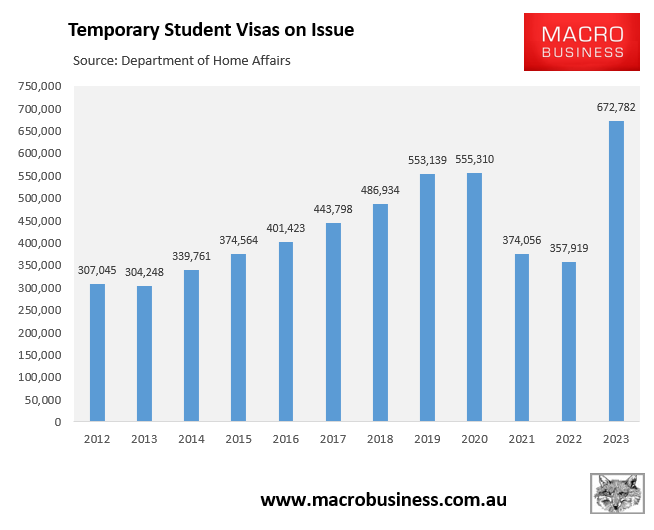
Anglicare raised concerns this month that demand for starter jobs is far outstripping supply across country, posing problems for younger Australians seeking entry into the labour market:
Anglicare’s annual Jobs Snapshot report found that there are now an average of 26 applicants for each entry-level job vacancy.
“Our snapshot shows that almost 560,000 Australians in this situation are looking for work”, executive director Kasy Chambers said.
Australia’s labour supply has risen at a record pace due to unprecedented net overseas migration.
Combined with the softening economy, this surge in supply has driven the number of applicants per job well above pre-pandemic levels, pointing to rising unemployment:

Younger workers are already being adversely impacted with the youth unemployment rate rising to 9.2% in October, its highest since late 2021:
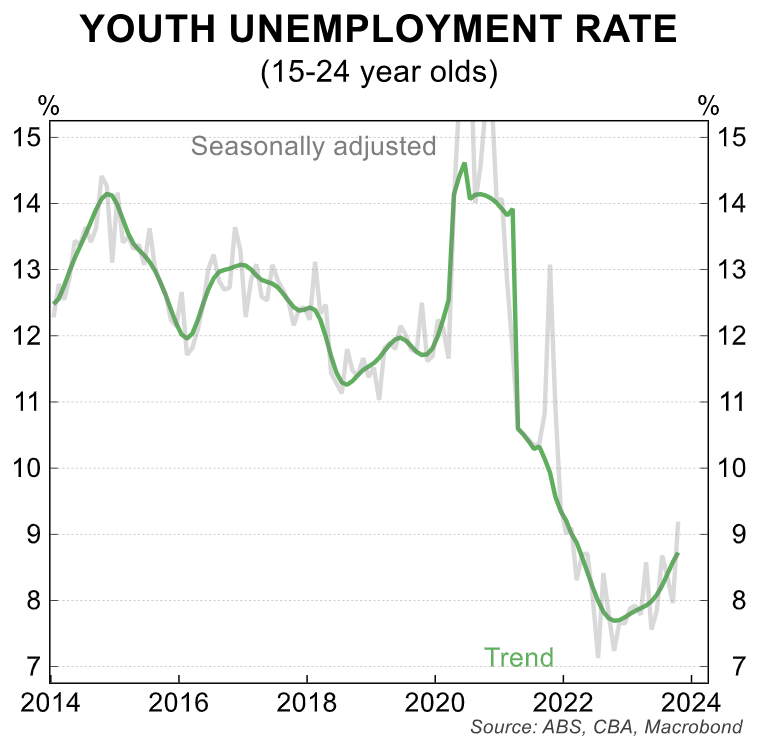
Record numbers of international students combined with the softening economy spells bad news for Australians seeking entry-level jobs.

